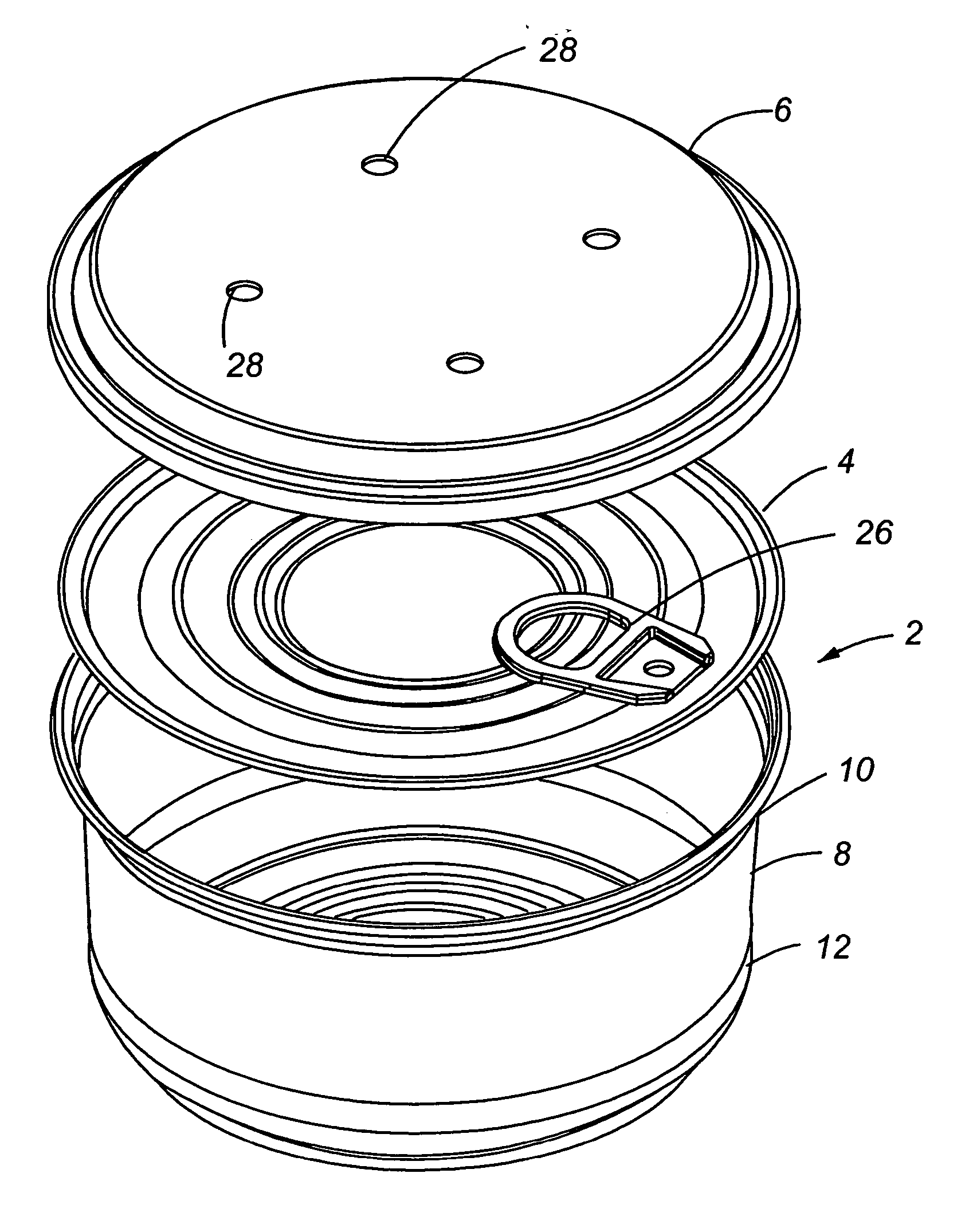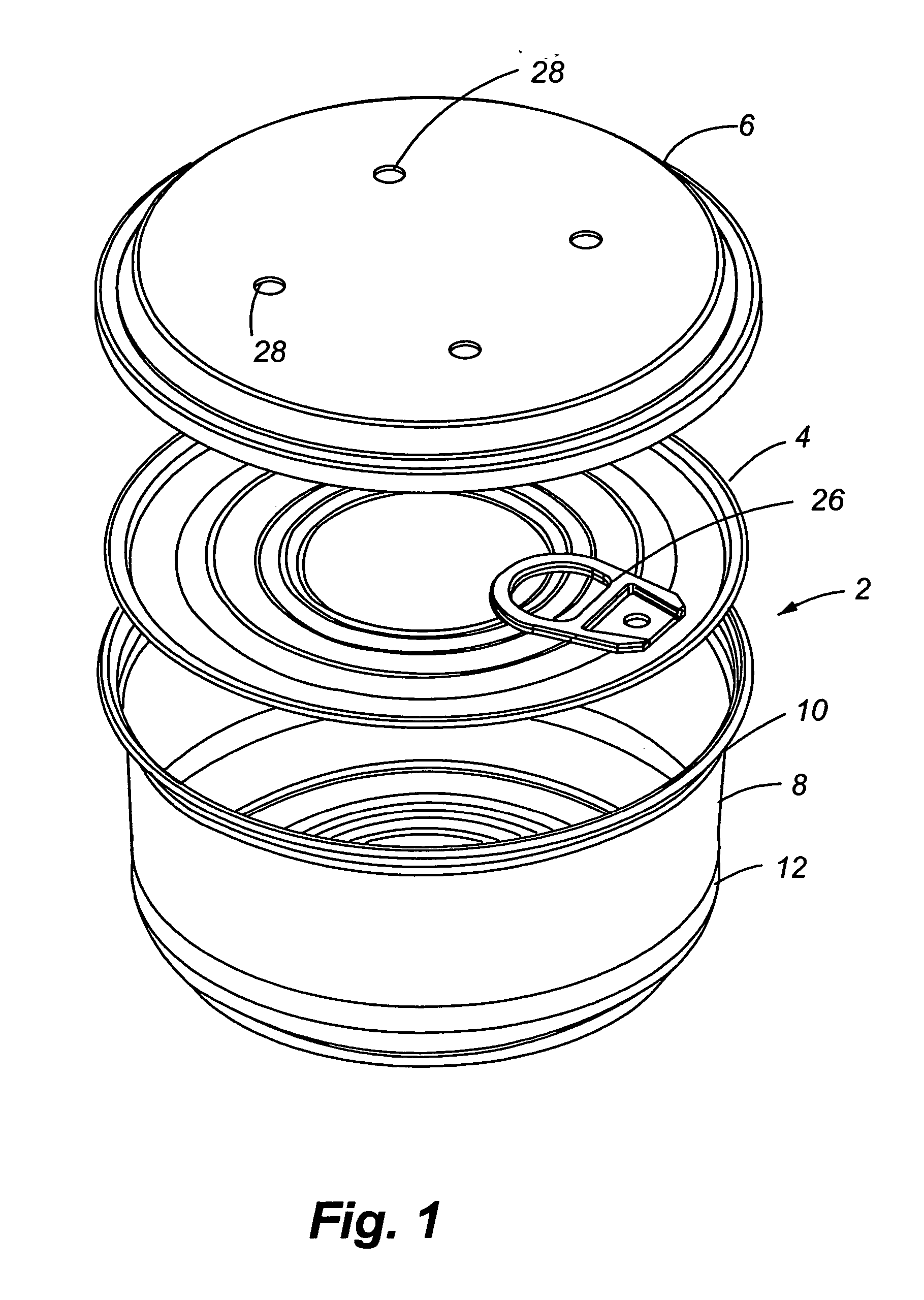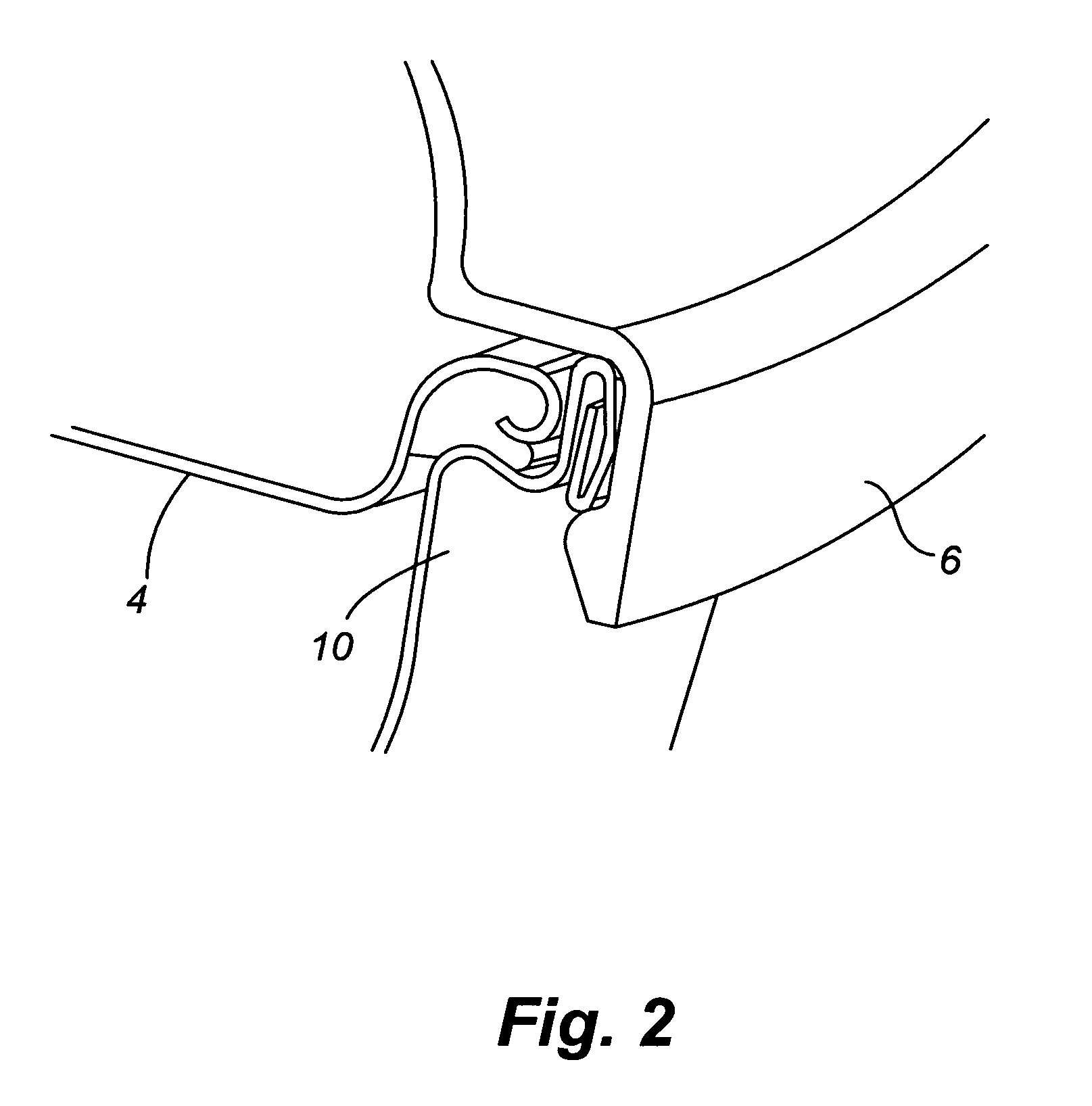Microwavable metallic container
a metal container and micro-wavable technology, applied in the field of food and beverage containers, can solve the problems of inability to use metal materials in conventional microwave ovens, inability to heat foodstuffs in metal containers, and general limited product design and us
- Summary
- Abstract
- Description
- Claims
- Application Information
AI Technical Summary
Benefits of technology
Problems solved by technology
Method used
Image
Examples
Embodiment Construction
[0072] Referring now to the drawings, FIGS. 1-11 depict various embodiments of a metallic microwavable bowl. Referring now to FIG. 1, a microwavable container 2 of the present invention is provided in an exploded view, and which identifies a metal lid 4 with interconnected pull tab 26, as well as a removable plastic lid 6 which is positioned thereon. In use, the metal lid 4 is hermetically sealed to the metallic side wall upper portion 10 of the container after the foodstuff is placed in the container during filling operations. During use, the metal lid 4 is removed from the metallic sidewall 8, and the removable plastic lid 6 is positioned on an upper end of the metallic side wall 8, to prevent splattering and to improve the heating of the foodstuff contained in the microwavable container 2.
[0073] As appreciated by one skilled in the art, since the container in one embodiment has a metal sidewall, it is capable of being stacked to greater heights due to the compressive strength. M...
PUM
 Login to View More
Login to View More Abstract
Description
Claims
Application Information
 Login to View More
Login to View More - R&D
- Intellectual Property
- Life Sciences
- Materials
- Tech Scout
- Unparalleled Data Quality
- Higher Quality Content
- 60% Fewer Hallucinations
Browse by: Latest US Patents, China's latest patents, Technical Efficacy Thesaurus, Application Domain, Technology Topic, Popular Technical Reports.
© 2025 PatSnap. All rights reserved.Legal|Privacy policy|Modern Slavery Act Transparency Statement|Sitemap|About US| Contact US: help@patsnap.com



